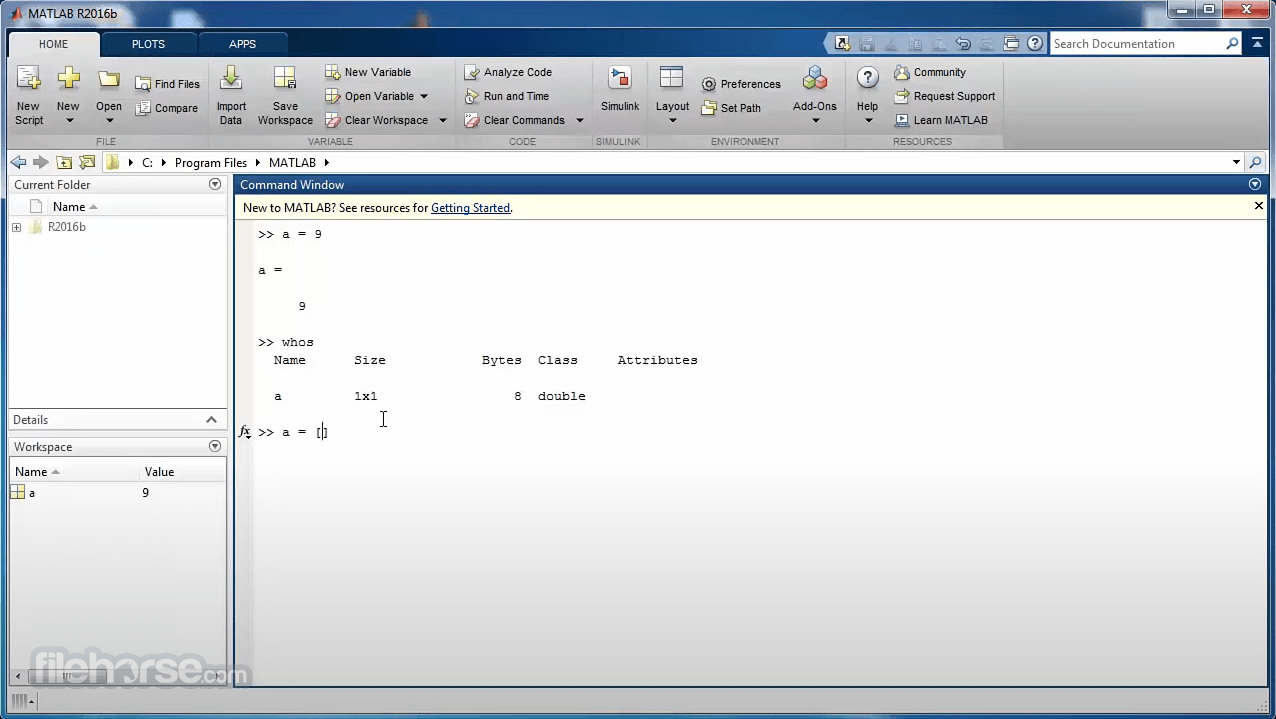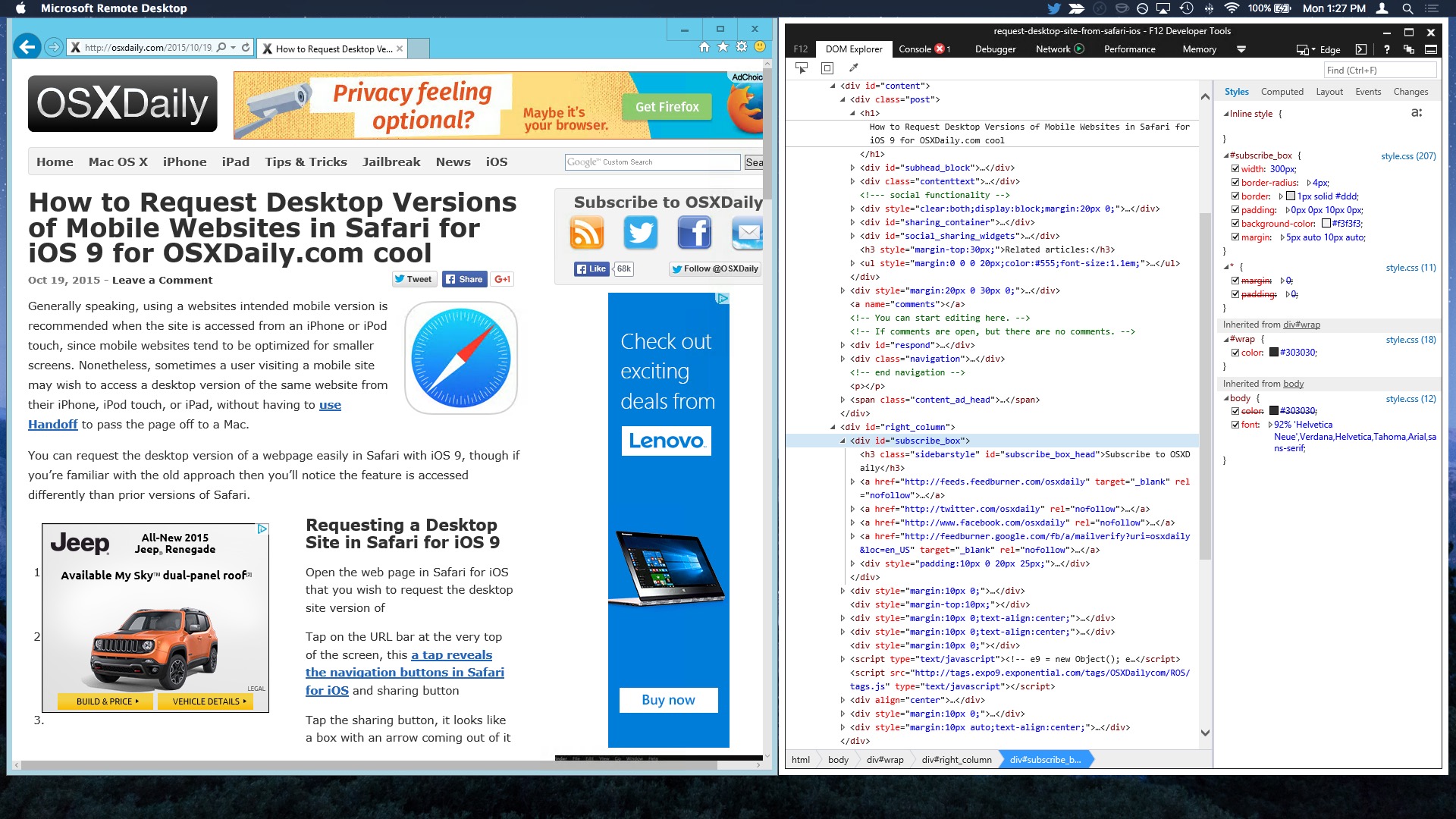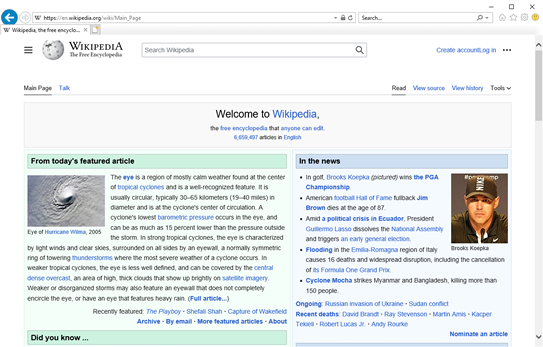
Explore our list of Mac OS X Yosemite (10.10) at Barnes & Noble®. Receive FREE shipping with your Barnes & Noble Membership. The release of Mac OS X 10.0 on March 24, 2001 included yet another preview of the Mac OS X version of IE 5. This was updated later, and the release of Mac OS X v10.1 on September 25, 2001 included the final version of Internet Explorer 5.1 for Mac OS X. IE 5.1 for Mac OS 8 and 9 was released on December 18, 2001. OS X 10.10, aka Yosemite, sports a more modern look and bridges the gap between Apple's desktop and mobile devices. The new Continuity helps you hand off tasks from iPhone to iPad to Mac, but that. Attention, Internet Explorer User Announcement: Jive has discontinued support for Internet Explorer 7 and below. Adobe flash player mac os x yosemite. In order to provide the best platform for continued innovation, Jive no longer supports Internet Explorer 7. Adobe Flash Player. Jive will not function with this version of Internet Explorer. OldVersion.com provides free. software downloads for old versions of programs, drivers and games. So why not downgrade to the version you love? Because newer is not always bett.
Today I'm going to show you how to break GNS3 out of your virtual world into the real world of the internet.
GNS3 is a great resource for anyone who needs access to live Cisco gear but doesn't have the money to purchase the hardware. You can create complete network topologies in the isolated safety of the lab. You can configure Network Address Translation (NAT), setup a DMZ with a Cisco ASA and even configure DHCP servers to offer IP addresses to VirtualBox clients.
All of this takes place in an sandbox environment. In other words, there's no way you can injure your real network because all the activity is confined to the lab. Most of the time this is exactly what you want but sometimes you may need to connect your virtual computer to the real world.
Wouldn't it be nice if you could setup a PC such as Windows XP in VirtualBox? Then connect it to virtual switch which is connected to a virtual Cisco route? And finally configure IP routing in such a way that your Windows XP machine can actually surf the web through all that virtualized gear?
That's what I'm going to show you how to do today.
There are a few elements we need to setup but if you follow me closely I'll show you how to open the door to getting online. The best part is that none of the servers online will have any idea that your client machine is communicating with it from an entirely virtual environment.
The secret to getting online
I'm about to let you in on a little secret. The magic that allows your virtual machines to get online through your virtual equipment is based on a virtual adapter called TunTap.
Every client machine has one or more network adapters. For example, my Macbook Air has a Wireless LAN adapter (en0) that lets me associate with a wireless access point. But I also have a physical USB-to-Ethernet adapter. When I plug this little dongle into my USB port I can attach an Ethernet plug and then get on the wired network.
TunTap is a little peice of software that allows you have to have multiple logical adapters. You can assign IP addresses to these adapters and generally use them for testing. By default, the TunTap adapter can't really do anything useful by itself. But I'm about t show you how we can bridge the TunTap adapter with our real wireless adapter so that we can have a virtual bridge to get online.
If all this sounds a little confusing now don't worry – I'll clarify as you read.
For now, let's just start from the beginning and get TunTap.
Go to http://tuntaposx.sourceforge.net/ and download and install TunTap. After installing the package, open a Terminal Window (Command + Space type 'terminal')
Yosemite Mac Os
You should see a bunch of interfaces. If so, bingo you're good to go.
By the way, you might wonder why you can't just type:
and search for the interface there. The reason is because the tap interfaces won't show up until you assign the interface in GNS3. Sounds weird I know which is why it can cause a lot of confusion.
We're going to assign the GNS3 interface next.
Assigning the tap interface in GNS3
After installing GNS3, we need to run it as the root user so it can create the first tap interface, tap0. This requires root access therefore GNS3 must be running as root for it work.
To run tap0 as root type:
Great, now drag out a new cloud from the devices list in the left pane, right click it and choose Configure.
Expand the cloud group in the left pane then choose the NIO TAP tab in the right pane.

Under TAP interfaces (require root access) type:
Click Add and then choose OK. By the way, if you don't click Add it won't work – I've made this mistake many times.
Alright, now drag out a network device like an Ethernet Switch and then click the Add a link button in the bottom left corner of the GNS3 window to connect any port on your Switch to the nio_tap:/dev/tap0 interface of your cloud.
The act of connecting this link causes GNS3 to create logical tap0 interface on your Mac.
For example, if you type ifconfig now you'll see a new tap0 interface hanging out at the bottom of your interface list.
This is huge progress because it now means we can connect our Mac to GNS3.


Let me show you what I mean…
Assign an IP address to the tap0 interface:
Now drag out a GNS3 router and connect it to the Ethernet switch you created earlier.
Right click and Start the router and choose Idle-PC. We're going to want a value with a checkmark next to it. This little step guarantees that the router won't eat up all your CPU resources while it's running.
Os X Yosemite Download
Once you set the Idle-PC value, double click the router and press enter until you get to the R1# prompt.
We need to put the interface connected to the switch in the same subnet as the tap0 interface. You can check which interface to configure by expanding your R1 device in the topology summary pane. It's located alone the right side of GNS3.
Here we go:
The top window in the graphic the result of assigning 10.0.0.2/24 to the tap0 interface on my Mac. And the bottom window shows the successful ping to 10.0.0.2 from my virtual router's fa0/0 interface assigned to 10.0.0.1/24.
Great.
Now that we know tap0 works, we can bridge it to our real interface, which is en0 on my Mac.
Now we need to assign an IP address on your real network to the bridge interface. I find the easiest way to do this is to simply use DHCP. That way you'll automatically get an unassigned IP address and there's no need to worry about conflicting IPs on your real network.
Of course if that doesn't work you can always manually assign a free IP address too.
Where each x represents each decimal value of your IP address and the y is the number of bits in your subnet mask.

Explore our list of Mac OS X Yosemite (10.10) at Barnes & Noble®. Receive FREE shipping with your Barnes & Noble Membership. The release of Mac OS X 10.0 on March 24, 2001 included yet another preview of the Mac OS X version of IE 5. This was updated later, and the release of Mac OS X v10.1 on September 25, 2001 included the final version of Internet Explorer 5.1 for Mac OS X. IE 5.1 for Mac OS 8 and 9 was released on December 18, 2001. OS X 10.10, aka Yosemite, sports a more modern look and bridges the gap between Apple's desktop and mobile devices. The new Continuity helps you hand off tasks from iPhone to iPad to Mac, but that. Attention, Internet Explorer User Announcement: Jive has discontinued support for Internet Explorer 7 and below. Adobe flash player mac os x yosemite. In order to provide the best platform for continued innovation, Jive no longer supports Internet Explorer 7. Adobe Flash Player. Jive will not function with this version of Internet Explorer. OldVersion.com provides free. software downloads for old versions of programs, drivers and games. So why not downgrade to the version you love? Because newer is not always bett.
Today I'm going to show you how to break GNS3 out of your virtual world into the real world of the internet.
GNS3 is a great resource for anyone who needs access to live Cisco gear but doesn't have the money to purchase the hardware. You can create complete network topologies in the isolated safety of the lab. You can configure Network Address Translation (NAT), setup a DMZ with a Cisco ASA and even configure DHCP servers to offer IP addresses to VirtualBox clients.
All of this takes place in an sandbox environment. In other words, there's no way you can injure your real network because all the activity is confined to the lab. Most of the time this is exactly what you want but sometimes you may need to connect your virtual computer to the real world.
Wouldn't it be nice if you could setup a PC such as Windows XP in VirtualBox? Then connect it to virtual switch which is connected to a virtual Cisco route? And finally configure IP routing in such a way that your Windows XP machine can actually surf the web through all that virtualized gear?
That's what I'm going to show you how to do today.
There are a few elements we need to setup but if you follow me closely I'll show you how to open the door to getting online. The best part is that none of the servers online will have any idea that your client machine is communicating with it from an entirely virtual environment.
The secret to getting online
I'm about to let you in on a little secret. The magic that allows your virtual machines to get online through your virtual equipment is based on a virtual adapter called TunTap.
Every client machine has one or more network adapters. For example, my Macbook Air has a Wireless LAN adapter (en0) that lets me associate with a wireless access point. But I also have a physical USB-to-Ethernet adapter. When I plug this little dongle into my USB port I can attach an Ethernet plug and then get on the wired network.
TunTap is a little peice of software that allows you have to have multiple logical adapters. You can assign IP addresses to these adapters and generally use them for testing. By default, the TunTap adapter can't really do anything useful by itself. But I'm about t show you how we can bridge the TunTap adapter with our real wireless adapter so that we can have a virtual bridge to get online.
If all this sounds a little confusing now don't worry – I'll clarify as you read.
For now, let's just start from the beginning and get TunTap.
Go to http://tuntaposx.sourceforge.net/ and download and install TunTap. After installing the package, open a Terminal Window (Command + Space type 'terminal')
Yosemite Mac Os
You should see a bunch of interfaces. If so, bingo you're good to go.
By the way, you might wonder why you can't just type:
and search for the interface there. The reason is because the tap interfaces won't show up until you assign the interface in GNS3. Sounds weird I know which is why it can cause a lot of confusion.
We're going to assign the GNS3 interface next.
Assigning the tap interface in GNS3
After installing GNS3, we need to run it as the root user so it can create the first tap interface, tap0. This requires root access therefore GNS3 must be running as root for it work.
To run tap0 as root type:
Great, now drag out a new cloud from the devices list in the left pane, right click it and choose Configure.
Expand the cloud group in the left pane then choose the NIO TAP tab in the right pane.
Under TAP interfaces (require root access) type:
Click Add and then choose OK. By the way, if you don't click Add it won't work – I've made this mistake many times.
Alright, now drag out a network device like an Ethernet Switch and then click the Add a link button in the bottom left corner of the GNS3 window to connect any port on your Switch to the nio_tap:/dev/tap0 interface of your cloud.
The act of connecting this link causes GNS3 to create logical tap0 interface on your Mac.
For example, if you type ifconfig now you'll see a new tap0 interface hanging out at the bottom of your interface list.
This is huge progress because it now means we can connect our Mac to GNS3.
Let me show you what I mean…
Assign an IP address to the tap0 interface:
Now drag out a GNS3 router and connect it to the Ethernet switch you created earlier.
Right click and Start the router and choose Idle-PC. We're going to want a value with a checkmark next to it. This little step guarantees that the router won't eat up all your CPU resources while it's running.
Os X Yosemite Download
Once you set the Idle-PC value, double click the router and press enter until you get to the R1# prompt.
We need to put the interface connected to the switch in the same subnet as the tap0 interface. You can check which interface to configure by expanding your R1 device in the topology summary pane. It's located alone the right side of GNS3.
Here we go:
The top window in the graphic the result of assigning 10.0.0.2/24 to the tap0 interface on my Mac. And the bottom window shows the successful ping to 10.0.0.2 from my virtual router's fa0/0 interface assigned to 10.0.0.1/24.
Great.
Now that we know tap0 works, we can bridge it to our real interface, which is en0 on my Mac.
Now we need to assign an IP address on your real network to the bridge interface. I find the easiest way to do this is to simply use DHCP. That way you'll automatically get an unassigned IP address and there's no need to worry about conflicting IPs on your real network.
Of course if that doesn't work you can always manually assign a free IP address too.
Where each x represents each decimal value of your IP address and the y is the number of bits in your subnet mask.
You should now be able to ping your bridge0 ip address from R1.
The next step is setting up your default route on R1.
If you do a show ip route you'll see there's no default route. This means if R1 sees a packet destined for a network that it doesn't have in its routing table it'll simply discard it. But we don't want that. By default, R1 should route any less specific routes to the internet out your default gateway through your bridge0 interface. So let's change that.
Mac Os X Yosemite Dmg
Back on R1, type:
This says: 'For any packet not in my routing table route it through my default gateway on my real live network at 192.168.0.1′
Now configure R1's fa0/1 interface to have the IP address of the bridge id.
In the final step, you can configure NAT/PAT on R1 so that the internal network (10.0.0.0/24 in my example) get's translated to your 'global' address on the 192.168.0.0/24 subnet.
First you can create an access list for all the hosts insides your network. Let's say all your hosts inside the GNS3 network are on the 10.0.0.0/24 subnet you would type the following on R1:
This just sets up the rule to match all the hosts on your internal network.
Then go to your inside interface and type:
Mac Os Yosemite Iso
Then go to your external interface and type
Now setup the translation rule:
That should do the trick.
Alternatively, another way to get your router out to the internet is to:
- Disable your Wi-Fi adapter
- Plug in the Mac to the network using your Ethernet adapter
- Type ifconfig to get your adapter name: en0, en1 etc…
- Launch GNS3 as root, create a cloud and under the settings for that cloud in the NIO Ethernet tab, choose your Ethernet adapter from the drop down list
- Connect R1 to the cloud using the Add a link tool
- Make the interface connecting R1 to the cloud get an IP from DHCP.
- config t
- int fa0/0
- ip address dhcp
- do ip domain-lookup
- end
This will force the router to get an IP address from the cloud and should let you get out.
Download Internet Explorer For Mac Os X Yosemite
I hope this helps. I know this tutorial was a little sloppy and might seem confusing. If so, just leave a comment or shoot me and email and I can help you with the finer details.
Internet Explorer Para Mac Os X Yosemite
This guide will you take you each step of the way through setting up a VPN on your Mac. The steps and screenshots used in this tutorial are from OS X 10.10 (Yosemite) but are nearly identical to previous versions of OS X, so you should have no trouble following along, even if you're not using Yosemite.
If you don't have a VPN service yet, I strongly recommend and endorse the VPN service provided by Private Internet Access, which works perfectly with OS X on any Mac.
- Let's get started. Click the Apple Button from the Menu Bar, and select System Preferences….
- Locate the Network button, and give it a click.
- From the menu on the left side of the Network window, there's a list of all your current connections (whether they're in use or not). To add a VPN connection, click the 'plus sign' ( + ) at the bottom of your Network connections list (see screenshot below).
- Click the 'up and down arrow' icon at the end of the Interface: drop down menu.
- Select VPN from that list.
- For the sake of this tutorial we're going to create an L2TP over IPSec VPN connection. Without having to install any additional software, OS X supports the VPN protocols L2TP (over IPSec), PPTP and Cisco IPSec. If you're using PPTP or Cisco IPSec you should still be able to follow along without any problems, the steps are quite similar.
- Give your Service Name:, a name. The name itself doesn't matter, but something descriptive is always best. That way you'll always know which VPN you're connecting to, especially if you set up multiple VPNs. Click the Create button when you're done.
- Back in the main section of the Network window is where you'll configure the first part of your VPN connection. Leave the Configuration: set to Default. Enter your VPN service providers server in the Server Address: field, and your VPN user name in the Account Name: section. Now click on the Authentication Settings… button.
- You can enter your password in the Password: field if you'd like, or you can leave it blank and have your Mac ask for your VPN password each time you connect to it (which is more secure). If your VPN provider uses a Secret key, enter it in the Shared Secret: field. When you're done, click OK
- Now click the Advanced button.
- Place a check in the box labelled Send all traffic over VPN connection and then click OK.
- Finally, make sure there's a check in the box labelled Show VPN in the menu bar, and click Apply.
- Now locate that VPN icon in your Menu Bar (see screenshot below) and click it. Select your newly created VPN to connect to it.
- If you opted to have your Mac save your VPN connection, you should connect right away. Otherwise you'll be prompted for your password, and then connect. Either way, you're done! If you click the VPN icon again, it will show you how long you've been connected.
